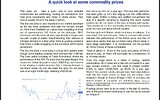Dona Ferentes
Beware the march of Ideas
- Joined
- 11 January 2016
- Posts
- 17,419
- Reactions
- 23,856
more .....“We believe that by applying our advantages in this space we can bring on a much-needed resource ... we can bring it on at much lower cost and I think importantly, with much less environmental impact versus say the open mining ..
.
Exxon Mobil aims to establish itself as a prominent player in the US lithium market. Unlike traditional methods of acquisition, Exxon is taking a grassroots approach, focusing on a novel production method. The company plans to leverage its expertise in drilling, in collaboration with partner Tetra, to tap into the vast potential of the Smackover formation, spanning 120,000 acres across multiple US states.
Exxon's strategy involves utilising Tetra's technology based on the unproven Direct Lithium Extraction (DLE) process. If successful, this approach could reduce water consumption and accelerate lithium production. Their chosen location in southern Arkansas aims to start producing battery-grade lithium by 2027, with a goal to supply enough for one million electric vehicles annually by 2030.
Rather than mining hard rock deposits, Exxon intends to extract lithium from brine deposits in the Smackover formation, distinguishing its approach from the practices in Australia. Initially, they plan to produce lithium carbonate, similar to operations in Chile and parts of Argentina, sufficient for approximately 100,000 EV batteries annually.
Exxon will face competition from smaller lithium-focused rivals like Albemarle, Livent (set to merge with Allkem), and various companies in Canada and the Carolinas. Notably, Exxon enters the sector during a period of declining prices for battery-grade carbonate, hydroxide lithium, and spodumene ore.
Exxon's partnership with Tetra involves developing over 6,100 lithium-rich acres in Arkansas. The company has been conducting drilling and testing to evaluate the Smackover Formation's potential, but the challenging depth of the brine deposits, at around 109,000 feet underground, poses significant logistical and cost considerations.
Crucially, Exxon is exploring the unproven DLE technology for commercial operations, a move aligned with Chile's interest in conserving water reserves. The success of DLE is pivotal for both Exxon and the global lithium industry.
Exxon's commitment to ramping up domestic lithium production aligns with its vision of supporting the transition to electric vehicles and reducing its environmental footprint. As Dan Ammann, President of Exxon's Low Carbon Solutions Business, emphasizes, they aim to lead the way in setting a high environmental standard for lithium production in the US.






